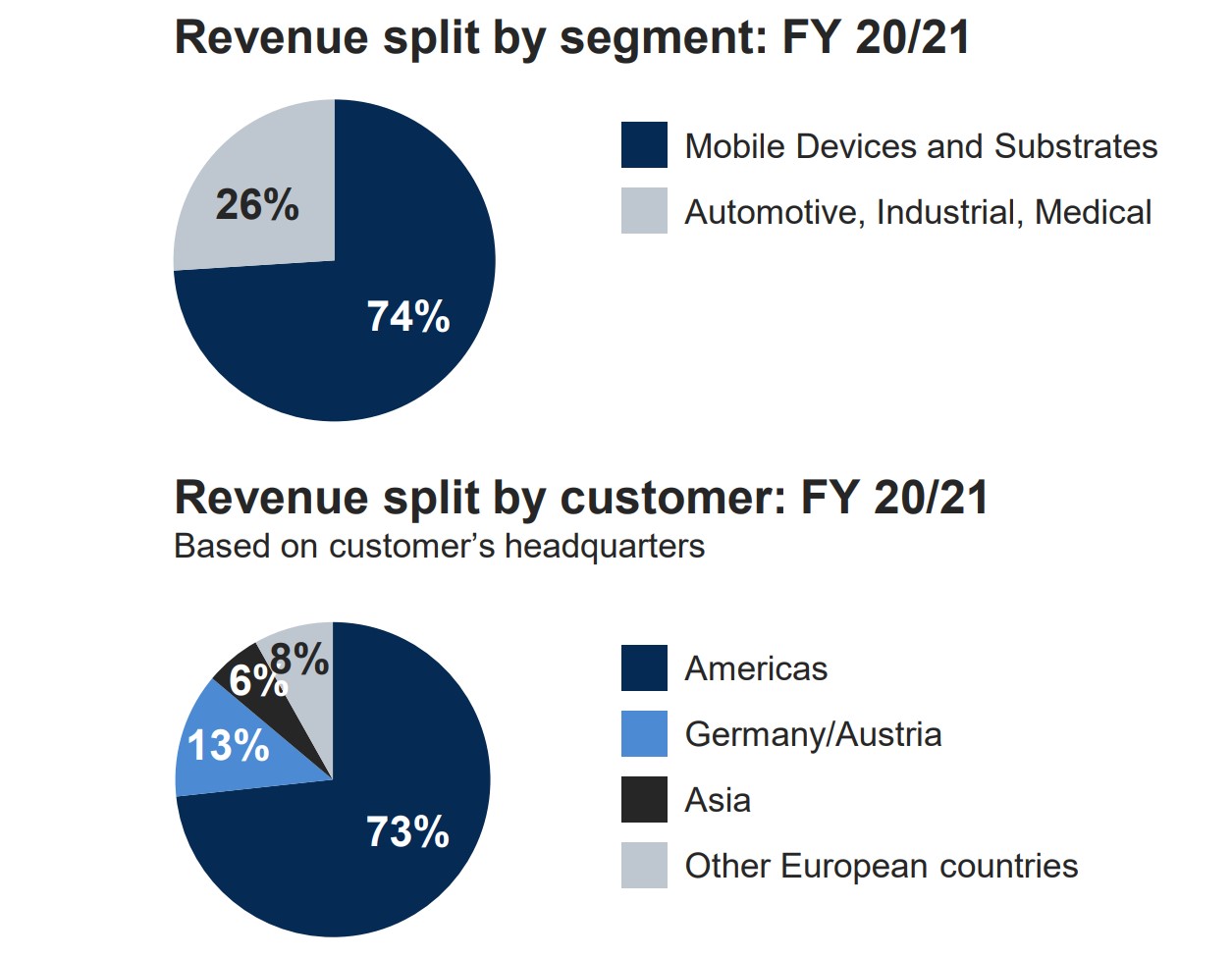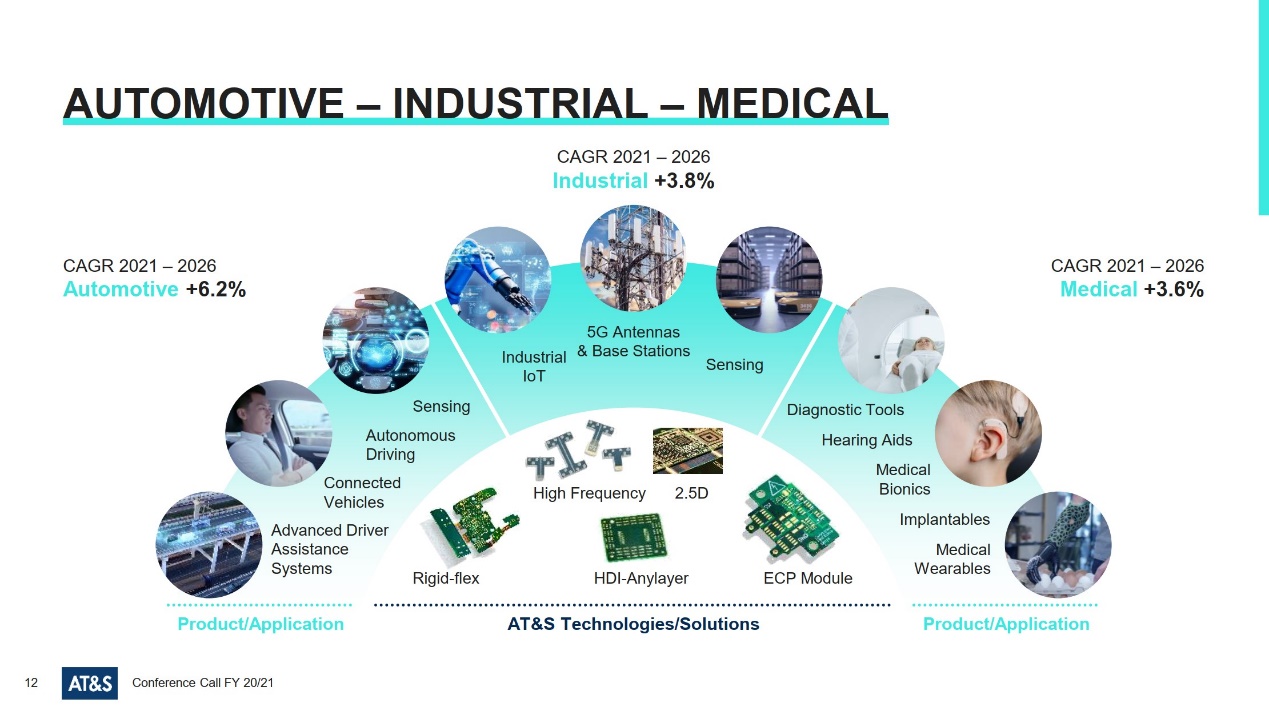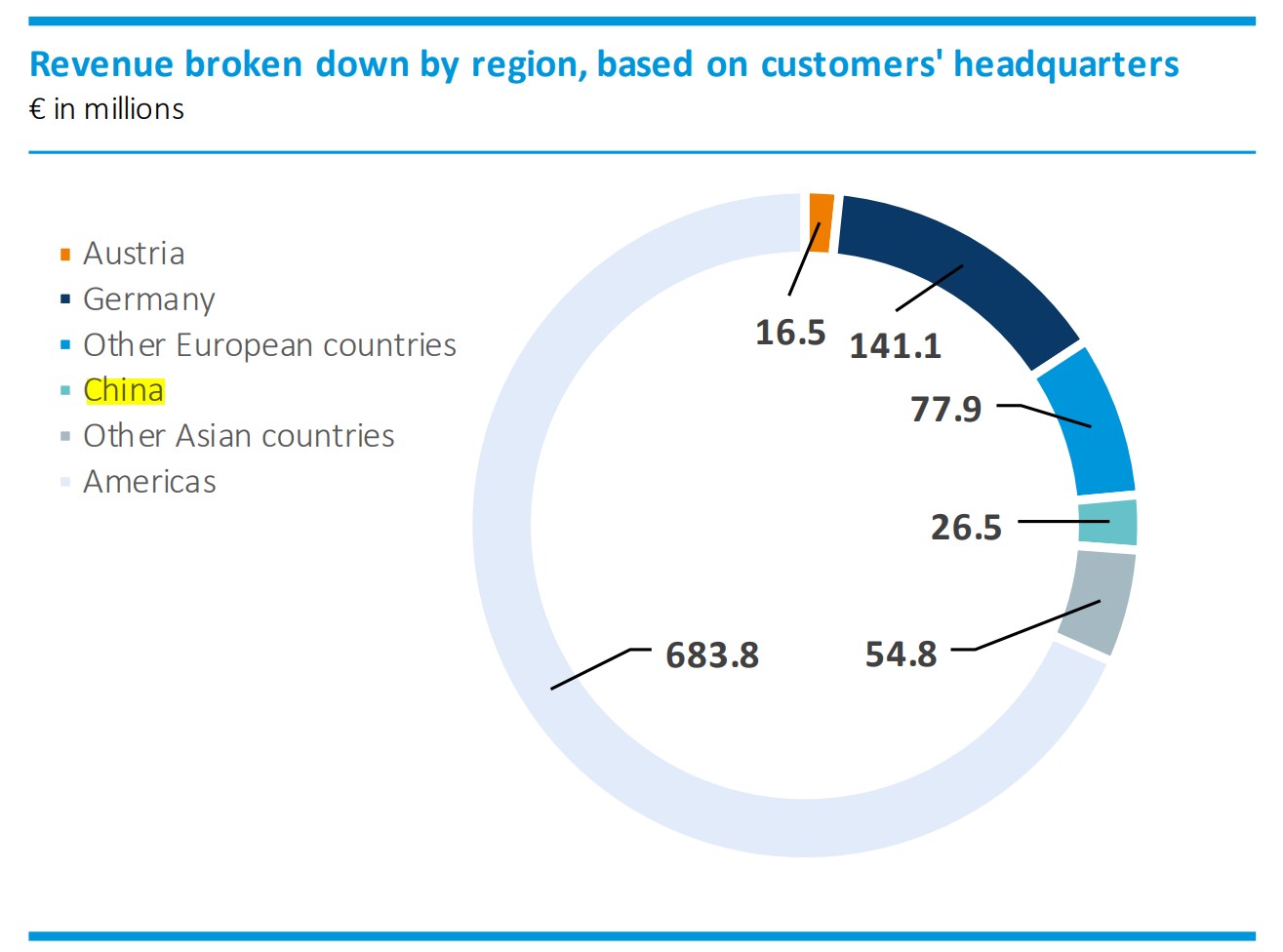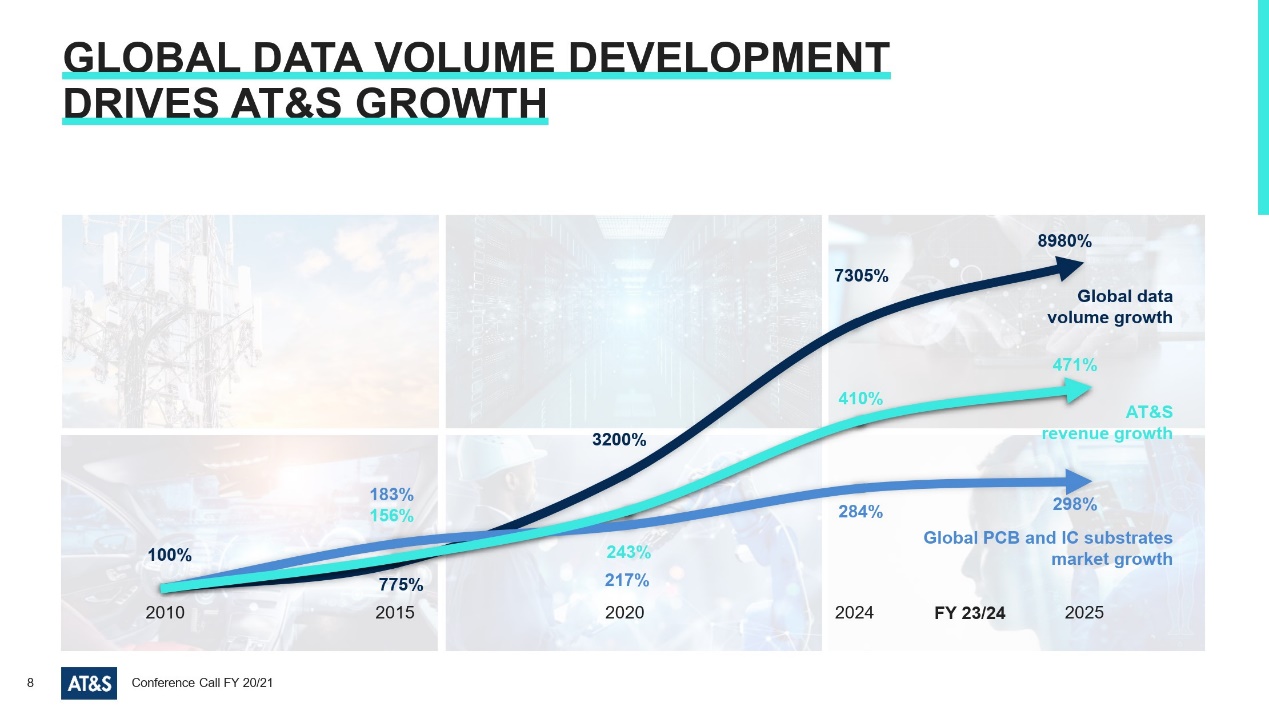Previously, we observed the impact of the COVID-19 epidemic on the electronics industry through many enterprises in the upstream and downstream of the electronics industry - the epidemic generally has an objective role in promoting the electronics industry, such as data centers, PCs, etc. The virus has not been suppressed globally, and the tension in international trade has not been relaxed. Various factors have led to the result of missing cores.
Against this background, the global electronic industry market is still on the rise. According to the data provided by Prismark in March this year, the market size of the global electronics industry has expanded 6.9% in the past year, and CAGR is expected to reach 4.6% in the next few years.

This is a group of data shared with us by Andreas Gerstenmayer, CEO of Otis Group, at the AT&S annual media exchange not long ago. From this set of data, automobiles, medical treatment, communications, consumer electronics, industry, and computers are all bullish hot spots in fact, and automobiles, industry, and communications have special potential in the next few years.
As one of the most influential enterprises in the field of PCB and semiconductor packaging carrier, Otex's own development should be quite valuable for observing the overall development trend of the electronic industry. This data of Prismark also mentioned that the growth rate of PCB and semiconductor packaging carrier market in the past year was 8.6%, and the CAGR of this market in the next few years was 5.3%.
Ge Simai gave the growth data of Otus itself. In the past fiscal year, the revenue growth in PCB and semiconductor packaging carrier market reached 18.8%, and the expected annual growth rate in the following years will exceed 15%. This shows that the growth of Otus is higher than the market average. Of course, there may be a difference between Prismark's statistical data and the actual situation, but in any case, these data reflect that the electronic industry itself is still growing quite well.

Take a closer look at the financial report of Otus FY 20/21
Otus has held a teleconference on the FY 20/21 report on May 18, and the contents presented are also mentioned in this media sharing meeting. The annual sales of Otus in fiscal year 20/21 reached 1.188 billion euros, an increase of 19% over the previous fiscal year, and the net profit increased by more than 100%.
Previously, the goal of sales of Otus exceeding 1 billion euros was actually achieved in FY 2018/2019, and now it is in the stage of steady improvement. Moreover, Otus expects that the sales target of 2 billion euros can be completed one year ahead of schedule - as mentioned in the More Than AT&S strategy put forward by Otus in the past, the revenue will double to 2 billion euros in the short and medium term (5 years).

This report card is related to Otus' involvement in diversified application fields. Otus also mentioned in the official materials that "diversified customers and product applications promote rapid growth of mobile device business" - many enterprises we have contacted before also found that those enterprises with wider business scope always have stronger ability to cope with market environment fluctuations.
Chen Jiang PHA (Pan Zhengqiang), CEO of OTEX Global Mobile Equipment and Semiconductor Packaging Carrier and Chairman of the Board of Directors of OTEX (China) Co., Ltd., said, "Our customer diversification and application scenario portfolio diversification also played a very important role in the epidemic year last year."
As mentioned above, Otus mainly produces high-end PCB boards and IC carrier boards (semiconductor packaging carrier boards), and its fields mainly cover mobile devices, IC carrier boards, automobiles, industry, medical care, etc. The operating activities of this company are mainly divided into two businesses: mobile equipment and semiconductor packaging carrier business unit and automotive, industrial and medical business units.
The mobile device and semiconductor packaging carrier business is mainly engaged in the production and manufacturing of PCB boards for mobile terminal devices, such as smart phones, tablets, laptops, desktop PCs and servers, digital cameras and other consumer electronic devices - Shanghai and Chongqing factories in China are the main production bases for this business.
The Automotive, Industrial and Medical Business Division targets customers in automotive, industrial applications, medical technology, aerospace, safety and other fields. The production and manufacturing of this business are mainly in India, South Korea and Austria.
In these two businesses, the revenue of FY 20/21, a mobile device and semiconductor packaging carrier business, increased by 29% to 882 million euros, which was the highest revenue in the history of the business unit, according to Otus. Ge Simai also mentioned that "the semiconductor packaging carrier plate has driven the sales of the business department to grow significantly", and "the demand for PCB products applied to modules is also growing."
However, the revenue of the auto, industry and medical business divisions declined slightly and remained basically flat. "It was the business sector most seriously affected by the epidemic, especially in the first half of last year (April to the end of October 2020), mainly because of the huge impact on auto sales." The uncertainty of automobile business is also a topic that we have discussed more before. Different market participants in the supply chain seem to have different attitudes towards it. From the Q3 and Q4 quarterly reports of AT&S in this fiscal year, the revenue of this business unit has begun to recover.
In an interview, Gerstmer said that the automobile industry was affected by several factors, including chip shortage and interference caused by other industries. "We predict that the chip supply of the entire automobile industry will not return to the state before the epidemic until 2023. It can be said that there is still a long way to go before the automobile industry fully recovers."
"In 2019, we saw the decline of car sales in the European market. Many new technologies were born in the process of car electrification, including new energy vehicles. But many consumers are not very clear about this and the future trend of electrification, so many people will still hold a wait-and-see attitude. Until consumer confidence is clear, car sales stop falling and recover, the market can be said to be fully recovered."
Otus' outlook for the next FY 21/22 fiscal year includes that the sales volume is expected to grow by 13% - 15%, and its outlook for profit margin is still optimistic - even though Otus is still in the stage of large capital expenditure, for example, the Chongqing factory project is started to expand capacity, and the expected expenditure for the third phase expansion of the Chongqing factory is 450 million euros.
It can be seen that the market environment still has a stimulating effect on such enterprises as Otis. In addition to the digital growth of revenue, Ge Simai also summarized the achievements made by Otus in the past years, including that Otus has "been among the top three in the world for many years" in the HDI (high-density interconnect) PCB field, and currently is the fifth in the world and "the third in the future" in the field of ABF (ajinomoto build up film) - mainly based on the continuous investment and expansion of Chongqing No. 3 Factory.
In addition, the More Than AT&S strategy proposed by Otus previously mentioned the "modularization trend", which mentioned "additional business opportunities". Otus has proposed three levels of growth and diversification strategies for this trend, as shown in the figure above. They are the PCB business of level 0, the IC carrier board of level 1 and the PCB used for module products, and the module integration service of level 2, which is called "providing module integration solutions" by Gersimay - "this is also completed as scheduled".
Last year's annual report mentioned that with this strategy, "we are expanding our position in the value chain and opening more business opportunities by entering the field of module integration." The completion of these three steps is also an important component of building the future market position in Oster's view. The expansion of core business, expansion of product portfolio, forward-looking product development and industrialization of new technologies should all constitute the current development strategy of the company.
As mentioned earlier, the mobile devices and semiconductor packaging carriers of Otus are mainly produced in Shanghai and Chongqing, China, which makes us curious about China's position in the enterprise landscape of Otus.
According to the annual report of last year, the number of employees of the company in China accounted for 69% of the total number of employees of the company. However, the proportion of the Chinese market in the revenue composition of Otus is actually not high, as shown in the figure above.
The revenue of FY 20/21 is shown in the figure above. The current regional composition of Otus' revenue can also partially reflect the pattern of the global electronics industry market. Comparing with the global distribution of Otus' assets, we can also see the characteristics of the market: